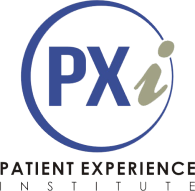Abstract
As the mother of a 28-year-old son with cerebral palsy and hydrocephalus, and as a healthcare consultant focused on patient experience and professional development, I have a unique perspective and skill set. Recently he experienced symptoms that included an excruciating headache, neck pain and lethargy. Fearing his ventriculoperitoneal shunt had malfunctioned, he went to the emergency room and was later admitted on the neuro inpatient floor for a three-day hospitalization. His original shunt had been placed in 1991, and he never had an issue with until August 2018. While in the hospital, he was informed that he was no longer shunt-dependent and that his headaches were a result of a pulled muscle in his neck, which would eventually resolve itself. He was discharged from the hospital with over-the-counter pain medicine for his neck pain and sent home. Thirteen days later, he was admitted to a different healthcare system, where the condition was quickly identified as hydrocephalus due to a shunt malfunction; neurosurgery was emergently performed, resulting in a six-day stay. These two hospitalizations, in such a short amount of time, provided completely different patient and family experiences, not to mention completely different clinical outcomes. When the patient satisfaction survey arrived in his mailbox following both hospitalizations, his survey answers were drastically different. This article will share examples of how healthcare professionals can positively impact the patient and family experience, even when the medical outcomes are not optimal, and how those interactions can positively impact patient satisfaction scores.
Experience Framework
This article is associated with the Quality & Clinical Excellence lens of The Beryl Institute Experience Framework. (http://bit.ly/ExperienceFramework)
- Access other PXJ articles related to this lens.
- Access other resources related to this lens.
Recommended Citation
Miller L. Is it fair to compare? A patient and family experience of two healthcare systems and neurosurgical teams within a two-week period. Patient Experience Journal. 2019; 6(3):9-15. doi: 10.35680/2372-0247.1337.
Creative Commons License

This work is licensed under a Creative Commons Attribution-Noncommercial-No Derivative Works 4.0 License.
Included in
Congenital, Hereditary, and Neonatal Diseases and Abnormalities Commons, Critical Care Nursing Commons, Diagnosis Commons, Health and Medical Administration Commons, Health Policy Commons, Health Services Administration Commons, Health Services Research Commons, Neurology Commons, Surgical Procedures, Operative Commons


